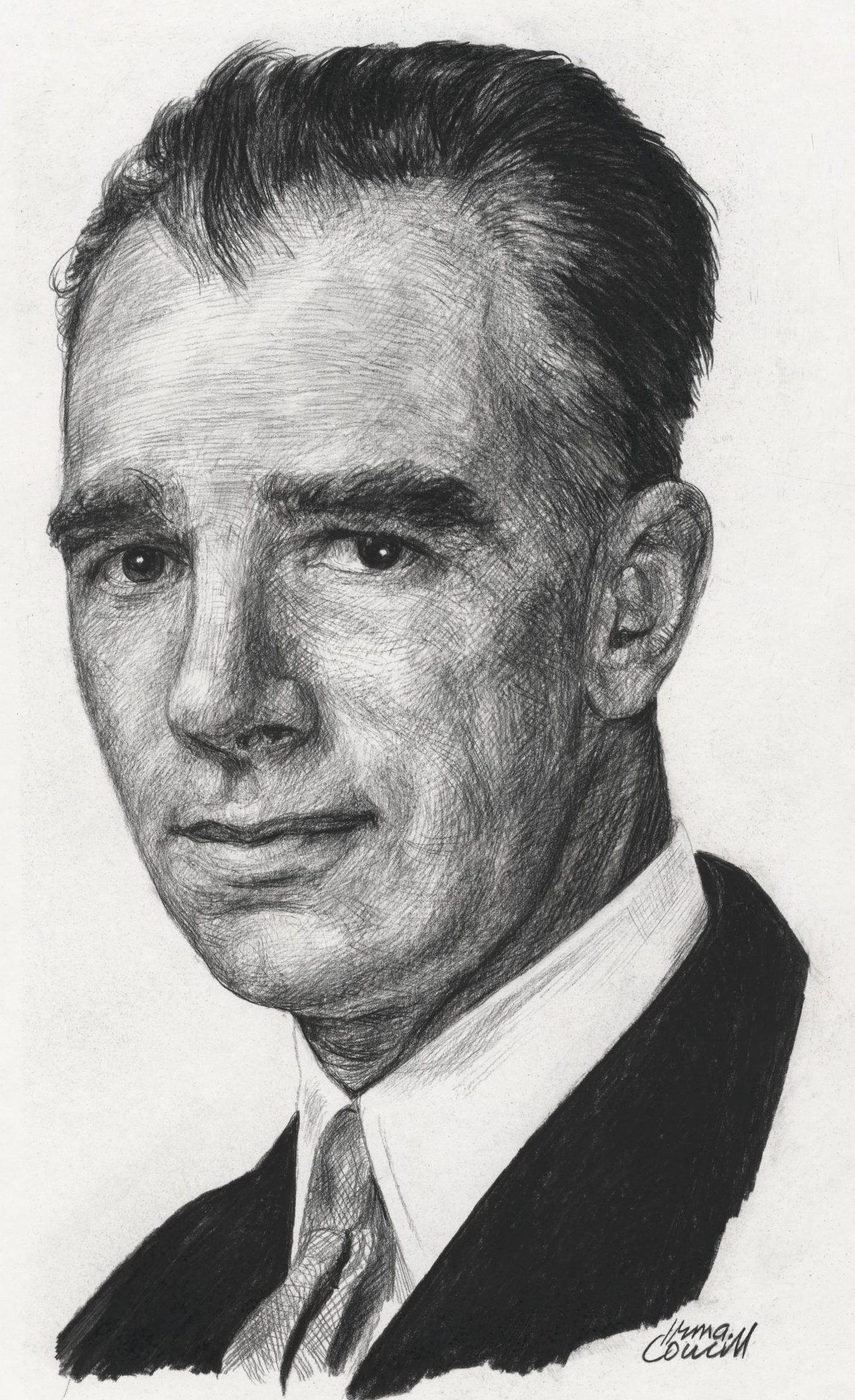Kenneth Foster Saunders

Birth Date: February 6, 1893
Birthplace: Victoria, British Columbia
Death Date: July 1, 1974
Year Inducted: 1997
Awards: DFC; AFC
His early presence in Canadian aviation and his ability to adapt the airplane to commercial tasks in the north set the scene for the years of bush flying that followed. In his later years, as the government's regulations administrator, he rounded out 42 years of extraordinary service to Canada.
The Wright Company's Flying School
Kenneth Foster Saunders, D.S.C., A.F.C., was born in Victoria, British Columbia, on February 6, 1893, and like so many others, found his education interrupted by the outbreak of World War I. His desire to join Britain's growing air service led him to the Wright Company's Flying School in Dayton, Ohio, U.S.A., where the required 350-minute flying course cost $1.00 per minute.
On October 15, 1915, Saunders received his Aviation Certificate No. 353, signed by Orville Wright, and sailed for England, all at his own expense. He completed the remainder of his service training at Eastchurch, England, graduating as Flight Sub-Lieutenant in the Royal Naval Air Service. He flew naval patrols and used a Sopwith Pup in a series of experimental landings on an improvised carrier deck. He served with distinction and ended the war as a Captain with a Distinguished Service Cross (D.S.C.) and an Air Force Cross (A.F.C.).
Ski-Equipped Aircraft
In 1919 he was offered a two-year contract to promote the sale of British Avro 504 aircraft in Sweden. This barnstorming-type of operation gave him his first experience with ski-equipped aircraft. After returning to Victoria in 1922, he obtained his Commercial Pilot's Licence.
The Fairchild Aerial Surveys
In August 1923, Saunders joined Fairchild Aerial Surveys of Canada Ltd., a new company being organized in conjunction with the Laurentide Pulp and Paper Company to assist in mapping Quebec's forests. The Fairchild organization in New York was developing better cameras and improving techniques for aerial mapping. Saunders began the photography experiments out of Grand'Mere, Quebec, with a Curtiss Seagull flying boat, but the addition of a Standard J-l on wheels and skis made the company the first to provide year-round bush services in Canada. The new company was the first to develop bush company being organized in conjunction with the Laurentide Pulp and Paper Company to assist in mapping Quebec's forests. The Fairchild organization in New York was developing better cameras and improving techniques for aerial mapping. Saunders began the photography experiments out of Grand'Mere, Quebec, with a Curtiss Seagull flying boat, but the addition of a Standard J-l on wheels and skis made the company the first to provide year-round bush services in Canada. The new company was the first to develop bush flying into a full-scale commercial operation in Canada.
Aerial Photography
Saunders' growing experience in aerial photography was sought by the U.S. Fairchild Company in building aircraft especially suited for photo mapping. He took part in the planning of the Fairchild FC (Fairchild cabin) series of monoplanes, tested the first FC-1, then took delivery of the first FC-2 on floats from the factory for Canadian operation. He demonstrated the seaplane version on flying into a full-scale commercial operation in Canada.
Rescue Flight
As the operation at Grand'Mere grew, it added charter flying to its activities. In 1927 Saunders flew a Curtiss HS-2L in the Quebec government-sponsored search flights for the missing French trans-Atlantic flyers Nungesser and Coli, without success. The biggest aviation news story of 1928 was the crossing of the Atlantic from east to west in April by a German aircrew flying a Junkers aircraft, the 'Bremen'. They were off course and landed on Greenly Island, in the Strait of Belle Isle, which separates Newfoundland from Labrador. Saunders flew newspapermen from Quebec to New York City, where a reception for the crew was held.
New Routes
By the time the company joined Canadian Airways Ltd. in 1931, it was the largest bush operator in eastern Canada. Saunders' role included opening new routes along the entire lower St. Lawrence for passengers, mail and freight. Other routes served Great Whale, Senneterre, and Port Harrison (Inoucdjouac) on Hudson Bay.
The Department of Transport
In April 1936, Saunders, with 21 years of flying experience, joined the Government Air Regulations Branch as a Department of Transport (DOT) Inspector. After a short period at DOT headquarters in Ottawa, and six months in Vancouver, he was assigned to the Edmonton region. From this base, Saunders covered Saskatchewan, Alberta, and the Northwest Territories by plane, boat and train. Later the district was reorganized to include Alberta, the Northwest Territories and the Yukon. By 1939 he was Regional Superintendent of Air Regulations for the Edmonton district. He continued to fly the Department's aircraft until his retirement.
After 42 years in aviation, including 21 years of government service and 10,000 hours of flying, Saunders retired in 1958 to live in Victoria, where he died on July 1, 1974, at age 81.
In his role as Government Inspector, Ken Saunders had the reputation of a tough disciplinarian with a mixture of fatherly advice and humour. He always signed his correspondence in green ink and the stories of his tenure in office are legendary.
Kenneth Foster Saunders was inducted as a Member of Canada's Aviation Hall of Fame in 1997 at a ceremony held in Calgary, Alberta.
To return to the Inductee Page, please click here.
